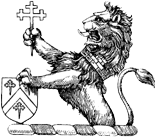A Line, Not a Cycle
Fall is a time of hope, rooted in responsibility to make good use of one's days
Fall arrived this week, precisely on Monday at 2:19 p.m. Another year is slowly bending towards its end.
I’ll admit fall is my favorite season. For me, the year goes downhill from May until about early October. (I used to say September in my native New Jersey, but I’m currently stuck in Virginia where the heat persists longer). Fall reminds man that his end is coming. It might not seem imminent but, with every moment, it grows closer. It’s not an accident that November, the last full month of autumn, is also a month we remember the faithful departed.
Fall is a lot like man: it’s splendor in some ways hides its truth. The color-spangled hills and woods are autumn’s calling card, but if you “follow the science” you know that what they really are is a sign of dying. Chlorophyll, the essential nutrient of leaves, breaks down under lower temperatures. As sugars are released in the leaf, certain colors form. As chlorophyll disappears, green turns brown. Eventually, Jack Frost becomes the grim reaper of forests and fields until, as William Cullen Bryant once observed, the blue “fringed gentian” remains the lone wildflower still daring to bloom (see here).
We speak of the “autumn of a man’s life” as its quiet slide toward the end. The annual cycle of the seasons is frequently compared to the course of a human life. Consider Thomas Cole’s cycle of four paintings, “The Voyage of Life,” in which autumn — “Manhood” — is the first where the man is truly afraid, the first scene where he’s praying, his fragile barque showing signs of wear and tear (see here).
But we err if we think of a man’s life like the cycle of the seasons because, in one critical respect, they differ: man has no cycle. That was the great insight of ancient Israel when it broke away from the “eternal return” mythology of other cultures to see time not as circular but linear, a river — to borrow Heraclitus — into which no man steps twice. It’s what sets Judaism and Christianity apart from many Eastern religions and “spiritualities” tinged with them, dabbling in inchoate kinds of “reincarnation.” The American poet John Greenleaf Whittier captured this insight in many of his poems, most especially in “Autumn Thoughts” (here). In it, the earth reminds the man that while it can expect the coming spring, for him “Thy winter shall no more depart//No spring revive thy wasted flowers//Nor summer warm thy frozen heart.”
Is fall a message of despair, perhaps a summons to “eat, drink, and be merry” because les neiges d’antan — the “snows of yesteryear” — have longed passed? No. Fall is a time of hope, rooted in responsibility: responsibility that in the history that is the life of man, one has made good use of the days and years a generous Lord has given. For then, like Bryant, one can reflect the hope of the blue gentian as it looks to heaven as the last flower to depart the season:
when I shall see
The hour of death draw near to me,
Hope, blossoming within my heart,
May look to heaven as I depart.
Hope should mark this jubilee year, hope but not presumption. For fall also reminds a man of his need to prepare, as one sees the busy squirrels gathering their acorns while they may.
From The Narthex
Much wailing and gnashing of teeth followed the Arizona Supreme Court's recent upholding of the…
I have a confession to make. For me and for many feeble Catholics like myself…
I stood with 50 other engineers the morning of September 11, 2001, staring at a…

